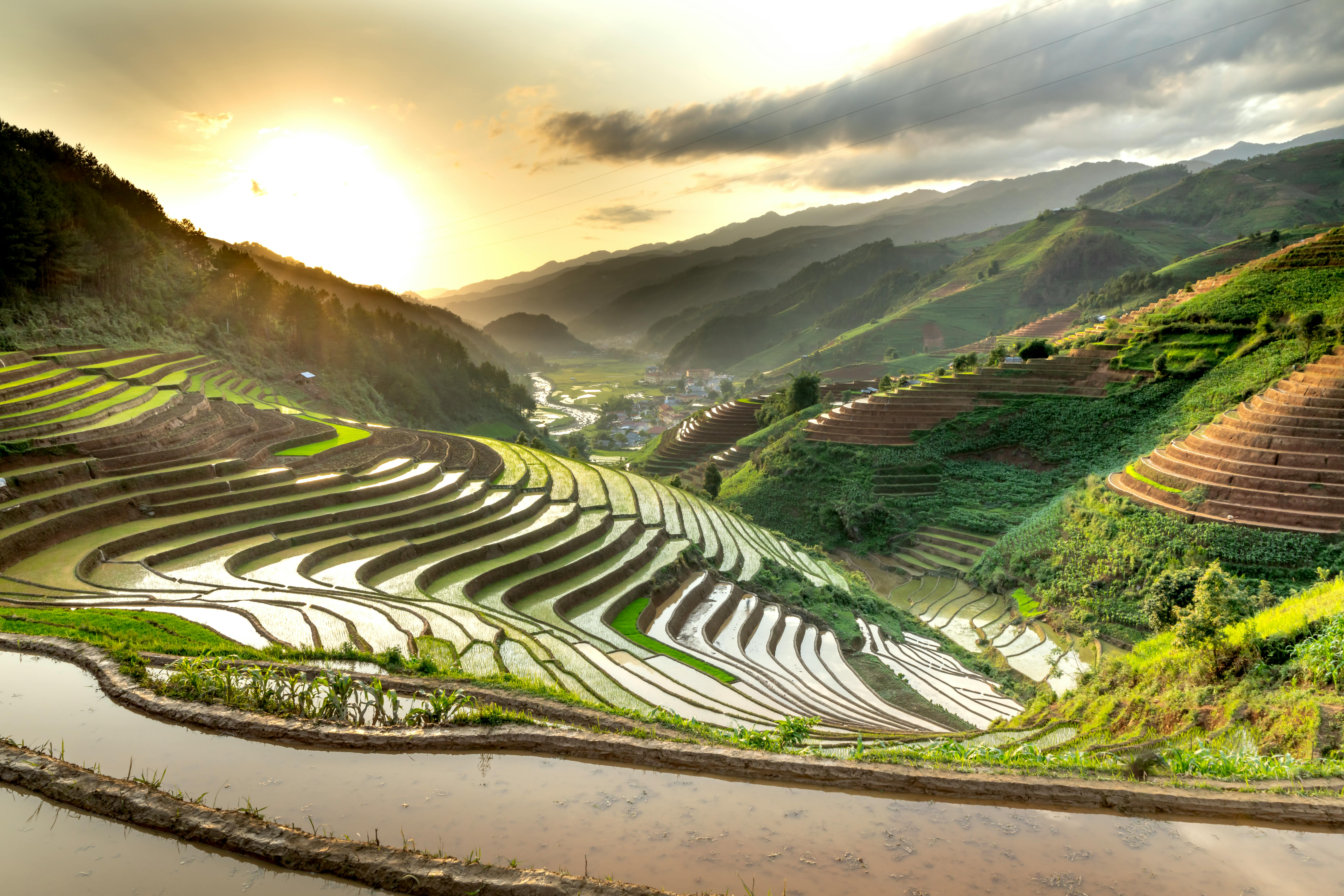Changing water levels is a natural phenomenon that has been occurring since the formation of our planet. Water levels can be affected by a variety of factors, such as climate change, water usage, and ocean and river currents. Changes in water levels can have both positive and negative effects on the environment and ecosystems, as well as human activities and lives. Understanding the causes and implications of changing water levels is important for protecting our planet’s resources.Water level changes can be caused by a variety of factors, including natural cyclical patterns, human activities, and climate change. Natural causes of water level changes include wind and wave action, seasonal variations in temperature and precipitation, and changes in ocean currents. Human activities such as construction of dams, irrigation systems, and water diversions can also cause water levels to rise or fall. Climate change can cause long-term changes in water levels by altering the amount of snowmelt runoff or sea level rise due to melting glaciers or thermal expansion of ocean waters.
How Do Rising Water Levels Affect the Environment?
Rising water levels caused by climate change are having a significant impact on the environment. As sea levels rise, coastal areas become more vulnerable to flooding, erosion, and saltwater intrusion. This can have a devastating effect on ecosystems, destroying habitats that are home to many species of wildlife. Coastal wetlands are particularly vulnerable to rising sea levels and can be destroyed in just a few years.
The destruction of these habitats can have a ripple effect on the entire ecosystem. For example, when mangrove forests are destroyed, the fish that rely on them for breeding and shelter may not survive. This can lead to declines in certain species of fish, which could have serious implications for local economies that depend on fishing for their livelihoods.
Rising water levels also put pressure on cities and towns located near coastlines. Coastal communities are often at risk of flooding due to rising sea levels, which can cause extensive damage to property and infrastructure. In some cases, entire towns may need to be relocated due to increased flooding risks.
In addition to coastal areas being affected by rising water levels, inland areas may also experience changes in precipitation patterns as a result of climate change. Higher temperatures cause more moisture to evaporate into the atmosphere, which can lead to heavier rainfall in some areas and longer dry spells in others. This can have a detrimental effect on agricultural production in areas that depend heavily on rain for crop yields.
Overall, rising water levels caused by climate change present a major threat to the environment and human communities alike. These changes are already having an impact on coastlines around the world and will only become more pronounced as global temperatures continue to rise.
Preparing for Changing Water Levels
In recent years, rising water levels have become an increasingly urgent issue for many communities around the world. With the effects of climate change becoming more and more apparent, it is essential that communities are prepared for the possibility of changing water levels. There are a number of steps that individuals, businesses, and governments can take to prepare for changing water levels.
One of the most important steps to take is to ensure that buildings and infrastructure are designed with resilience in mind. This means ensuring that buildings are built at higher elevations and using materials that can withstand floods or storms. It also means making sure that drainage systems are designed to handle large amounts of runoff, as well as ensuring that levees and floodwalls are reinforced and maintained.
Another step to consider is making sure that businesses have plans in place for how to respond in the event of a flood or storm surge. This includes having evacuation plans in place as well as plans for restoring operations after a disaster has occurred. Businesses should also consider ways to reduce their exposure to flood risks, such as moving equipment or inventory away from low-lying areas or investing in flood insurance.
Governments can also help prepare their communities by developing strategies for responding to flooding events and other natural disasters. This can include creating early warning systems so people can be alerted when a disaster is imminent, as well as creating emergency response teams who can help coordinate evacuations or provide assistance after a disaster has occurred. Governments should also work with businesses to ensure they have adequate plans in place and encourage them to invest in mitigation measures such as flood insurance or flood barriers.
Finally, individuals should take steps to protect themselves and their property from flooding events. This includes learning about potential risks in the area, buying flood insurance if available, elevating valuable items above ground level, and having an emergency kit ready if needed. It is also important for individuals to stay informed about local flooding events so they can act quickly if necessary.
By taking these steps, communities around the world can better prepare themselves for rising water levels caused by climate change. By ensuring buildings are resiliently built and businesses have adequate response plans in place, governments can help protect their citizens from potential disasters caused by changing water levels.
What Are the Effects of Increasing Water Levels on Marine Life?
The effects of increasing water levels on marine life can be both positive and negative. On one hand, rising sea levels can provide more habitat for aquatic species, while on the other hand, it can lead to the displacement of existing marine life and loss of biodiversity. One of the most visible effects is an increase in coastal flooding and erosion, which can have devastating effects on coastal ecosystems.
Rising sea levels can also contribute to coral bleaching and death, as well as an increase in the intensity and frequency of storms. Higher water temperatures caused by climate change lead to a decrease in oxygen levels in the ocean, which has a negative effect on fish populations. In addition, higher water temperatures lead to an increase in pollutants such as nutrients and heavy metals that are toxic to marine organisms.
The increased salinity resulting from rising sea levels can also have a negative effect on marine life. It can cause changes in pH levels which can be damaging for many aquatic species. Saltwater intrusion into freshwater habitats also has a negative impact on freshwater species, as it disrupts their natural environment and affects their ability to reproduce.
Finally, rising water levels due to climate change could lead to an increase in invasive species that could outcompete native species for resources. This could cause further damage to already fragile ecosystems, resulting in a decrease in biodiversity and further changes to the environment.
Overall, it is clear that rising sea levels due to climate change have far reaching consequences for marine life and the environment as a whole. It is essential that we take action now if we are to protect our oceans and ensure its health for future generations.
Decreasing Water Levels
Decreasing water levels can have a serious impact on the health of the environment and the people who depend on it. Water is essential for life, and when levels drop, the consequences can be dire. Not only can water shortages lead to droughts, but they can also damage environments, disrupt ecosystems, and cause economic losses. In addition, low water levels can lead to an increase in pollutants in the water supply and an increased risk of water-borne diseases. The effects of decreasing water levels are not limited to just environmental or economic concerns; they also pose a threat to public health.
One of the most severe effects of decreasing water levels is drought. Drought occurs when there is less precipitation than normal over an extended period of time. Droughts can cause many problems for communities that depend on agriculture or livestock for their livelihoods. Crops may wither and die due to lack of irrigation, leading to food shortages that result in malnutrition or even starvation. Livestock may suffer from dehydration or malnutrition due to lack of access to clean drinking water or adequate grazing land.
Environmental damage is another consequence of decreasing water levels. Without enough fresh water available, ecosystems suffer from disruptions such as reduced biodiversity and changes in natural habitats. Aquatic life may be depleted due to increased temperatures or pollutants in the water supply as well as inadequate habitat conditions caused by low flows and drying streams and rivers. Groundwater supplies may become contaminated with pollutants due to reduced flow rates which may further exacerbate environmental degradation.
Decreasing water levels also have economic consequences for communities that rely on freshwater resources for industry and commerce. Industries such as manufacturing, energy production, and agriculture all require significant amounts of freshwater resources in order to function properly. When these resources are not available due to decreased flow rates, entire communities can experience economic hardship from job losses as businesses must scale back operations or even close down completely due to lack of necessary resources.
Finally, decreasing water levels also pose a threat to public health due to decreased access to clean drinking water as well as an increase in pollutants found in waterways such as bacteria, viruses, arsenic, nitrates, etc., which can lead to serious illnesses such as cholera or typhoid fever if consumed by humans. Lowered flow rates also reduce the amount of dilution possible which increases contamination levels further exacerbating public health risks associated with decreased freshwaters supplies.
In summary, decreasing water levels have far-reaching consequences on a variety of fronts including environmental damage, economic hardship caused by job loss or reduced business activity and increased threats posed by polluted drinking waters or other contaminants found in waterways which threaten public health directly. It is essential that governments take steps now to ensure our freshwater supplies remain healthy so that future generations will not suffer from the consequences associated with declining freshwater availability today

What Factors Lead to Unpredictable Water Level Changes?
Unpredictable water level changes can be caused by a variety of factors. These include natural events such as floods, droughts and storms, as well as human activities such as dam construction, irrigation and water extraction. Climate change is also having an impact on water levels, with rising global temperatures leading to increased evaporation, reduced snowpack and glacier runoff, and increased precipitation in some areas. Additionally, sea level rise is causing more coastal flooding and higher ocean levels. All of these factors contribute to unpredictable water level changes both locally and globally.
Natural events such as floods are among the most common causes of unpredictable water level changes. These occur when rivers overflow their banks due to heavy rainfall or rapid snowmelt. Floods can cause significant damage to infrastructure and property, as well as contaminate drinking water supplies with pollutants and bacteria. Droughts are another natural event that can lead to unpredictable water levels due to reduced precipitation over a long period of time. Droughts can lead to severe shortages of fresh drinking water for humans and livestock alike.
Human activities can also cause unpredictable water level changes in rivers, lakes and other bodies of water. Dam construction is one example; dams create reservoirs that allow for the storage of large amounts of water but also restrict the flow of rivers downstream. This can lead to changes in the river’s natural flow patterns which can be difficult to predict or forecast. Irrigation is another activity that has an impact on water levels; excessive irrigation removes more water from streams than what is returned via precipitation or runoff, leading to decreases in stream flows over time. Finally, groundwater extraction through wells can reduce the amount of groundwater available for use by plants and animals living near these wells, resulting in localized decreases in surface waters over time.
Climate change is having an increasingly significant impact on global water levels due to rising temperatures around the world. Warmer temperatures lead to increased evaporation from bodies of surface waters such as lakes and oceans; this evaporated moisture then rises into the atmosphere where it condenses into clouds which then fall back down as precipitation (rain or snow). Warmer temperatures also melt snowpack earlier during spring months which leads to earlier peak flows in rivers before summer drought sets in; this leads to greater variability in river flows throughout the year due to increases during wet periods followed by decreases during dry periods. Additionally, warmer temperatures have caused glaciers around the world to retreat at unprecedented rates; this has resulted in decreased glacial runoff into rivers which has further contributed towards lower summer flows when combined with increased evaporation rates from warm air temperatures.
Monitoring Changing Water Levels
Monitoring changing water levels is an important part of understanding the dynamics of the environment. Water levels can be affected by numerous factors, including natural processes such as precipitation and evaporation, or human activities such as water extraction and wastewater discharge. Knowing how water levels are changing over time can help us better understand the impact of our activities on the environment and help us plan for future needs.
Measuring water levels is usually done using a variety of technologies, including manual readings using gauges or automated sensors. Manual readings are taken at regular intervals in order to track changes in water levels over time. Automated sensors allow for more frequent readings, providing a more detailed picture of how the water level is changing.
In addition to measuring current water levels, it is also important to monitor long-term trends in order to identify any potential changes in the environment. This can be done by analyzing historical data from past measurements, as well as monitoring current measurements to identify any unusual changes that may indicate a problem. By understanding how water levels have changed over time, we can better plan for future needs and take action to protect our environment.
Another important aspect of monitoring changing water levels is predicting future trends. This can be done using computer models which incorporate data from past measurements as well as current conditions, such as temperature and precipitation rates. By running simulations with different scenarios, scientists can get a better idea of how the environment may change in response to certain activities or conditions, allowing us to prepare accordingly.
Monitoring changing water levels is an essential part of understanding how our actions affect our environment and planning for future needs. By using manual readings or automated sensors, along with analyzing historical data and running simulations with computer models, we can gain valuable insight into how our environment is changing and take steps to ensure its health for years to come.
What Are the Causes of Rapidly Changing Water Levels?
Rapidly changing water levels can be caused by a variety of factors, including extreme weather events and human activities. During natural disasters such as hurricanes, flooding, and droughts, water levels can change rapidly as rain and other precipitation is added or removed from watersheds. Human activities that can cause rapidly changing water levels include urban development, changes in land use, and the construction of dams or other types of water infrastructure. In addition to these direct causes, climate change can also affect water levels as rising temperatures lead to more frequent and intense storms, which in turn cause rapid changes in water level.
Urban development can lead to rapid changes in water level due to the disruption of natural drainage patterns. For example, when buildings and roads are constructed in areas near rivers or wetlands, they can block existing drainage systems, resulting in increased flooding during storm events. Changes in land use are also a common cause of rapidly changing water levels. For example, when forests are cleared for agricultural purposes or when wetlands are drained for development purposes, the amount of surface runoff increases and causes greater fluctuations in water level. Additionally, large-scale constructions such as dams can affect water levels by blocking or redirecting the flow of rivers and streams. Finally, climate change is an increasingly important factor that influences how much precipitation is present in a given area over time and can lead to rapid changes in water level due to more frequent or intense storms.

Conclusion
The water level of the world’s oceans is subject to fluctuation due to many factors, including climate change, natural phenomena, and human activities such as coastal development and over-exploitation of water resources. Changes in ocean water levels can have a significant impact on coastal areas, and it is important for us to be aware of the potential risks that can accompany these changes. We must also work together to reduce the human impacts on our oceans and ensure that our actions do not contribute to further changes in ocean water levels.
Through understanding what is true about changing water levels, we can better prepare ourselves for future events and ensure that the global community is aware of the potential risks associated with such changes. Additionally, we should take proactive steps to mitigate these risks and protect our coasts from any potential harm that may arise from shifting oceanic levels. Through a combination of education, research, and collaboration, we can work together to ensure that our oceans remain healthy and sustainable for generations to come.

